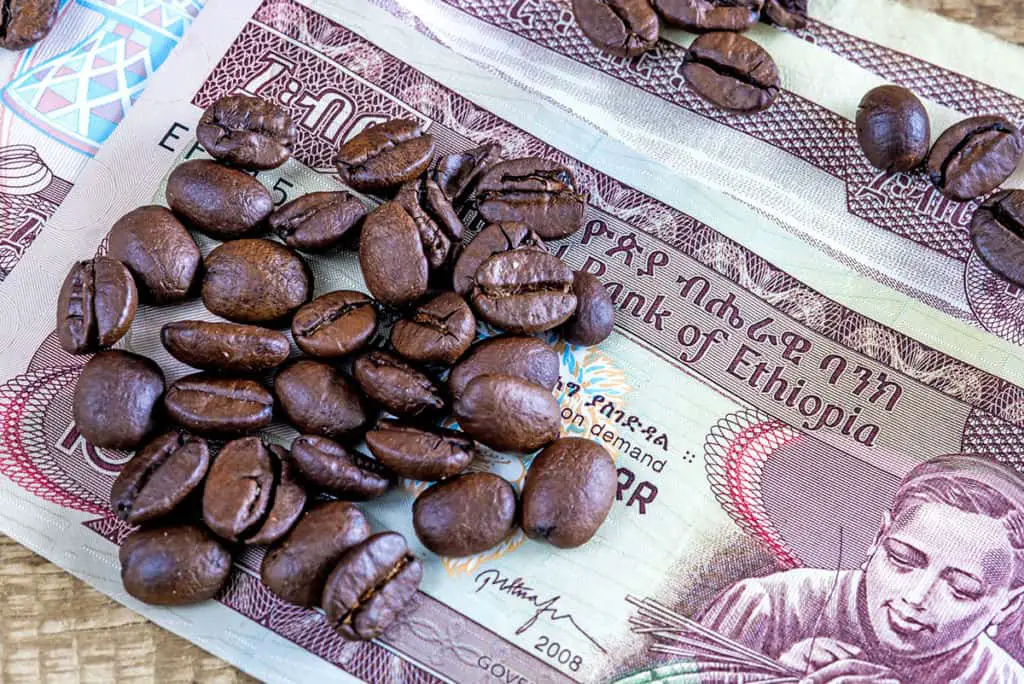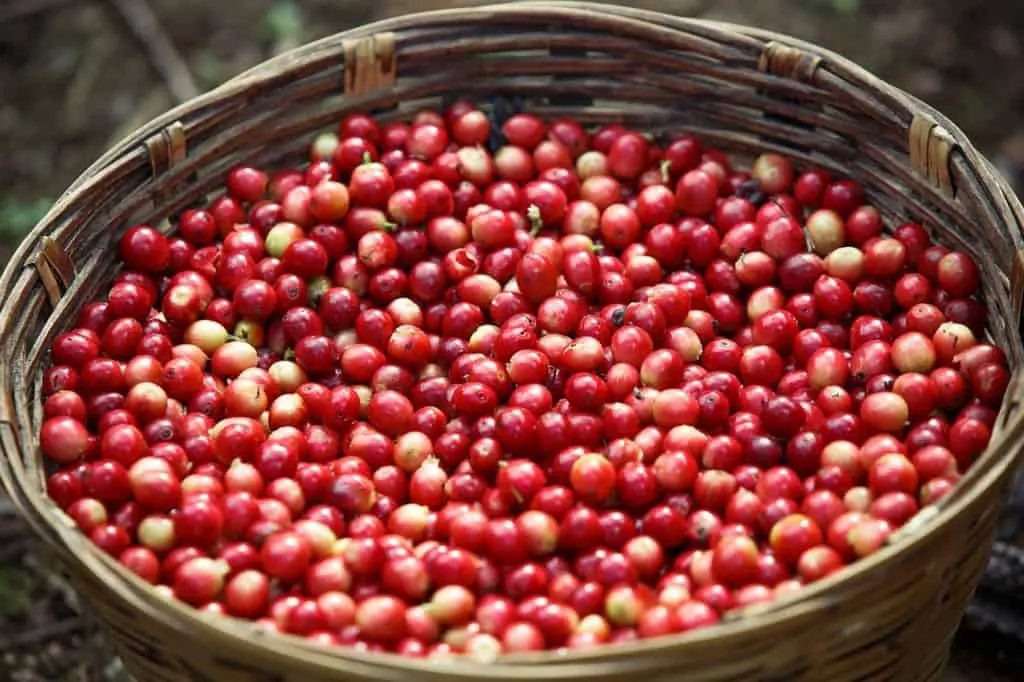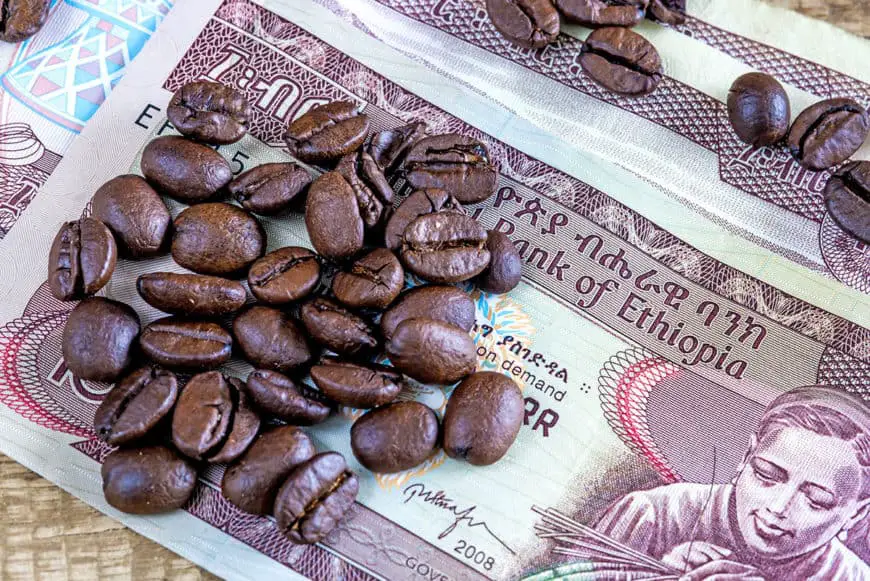
Ethiopia is widely recognized as the birthplace of coffee, with a rich history and culture surrounding the production and consumption of the beloved beverage. From its origins in the highlands of Ethiopia over a thousand years ago, coffee has spread to every corner of the world, becoming one of the most widely consumed beverages globally.
But it is in Ethiopia where the story of coffee begins, and where its traditions remain strongest. With a wide variety of coffee varieties and unique processing methods, Ethiopian coffee has a flavor profile like no other.
In this blog post, we will delve into the fascinating world of Ethiopian coffee and discover what makes it truly special.
Origins of Ethiopia Coffee
Ethiopia is the birthplace of coffee and one of the world’s top coffee producers and consumers. With its rich heritage and outstanding quality, Ethiopian coffee is among the best in the world. Read on to find out what makes Ethiopia’s coffee so good.
The story of Ethiopia coffee begins with a legend.
Sometime around 850 AD, a young goatherd named Kaldi used to take his goats to graze at pastures in the Kaffa province. One day, after having eaten red berries from a nearby shrub, the animals started jumping excitedly. Kaldi decided to taste a few berries himself. He too felt elated and energized.
Kaldi shared his discovery with monks at a local monastery. They quickly realized that consuming the berries could help them stay awake during long hours of prayer. To preserve the flavor of the powerful beans for longer, they roasted and soaked them in hot water and coffee was born.
Legend aside, historians believe that coffee beans were known long before Kaldi’s time. It is possible that Sudanese slaves chewed on coffee beans to help them survive the strenuous journeys of the trans-Saharan slave trade.
Ethiopia’s 6 Coffee Growing Regions
Ethiopian coffee grows mostly in the southern mountainous regions with deep, fertile volcanic soils at altitudes of up to 8,858 feet. This coffee tends to have much higher quality and more complex flavor notes than coffees coming from lower elevations.
Because Ethiopia’s coffee-producing regions are incredibly varied, flavor profiles differ markedly from region to region, between different micro-regions, and even farms.
1. Sidamo
Sidamo or Sidama region in the fertile highlands south of Lake Awassa in the Great Rift Valley is one of the most prolific coffee-growing regions in Ethiopia.
With altitudes of between 4,900 to 7,200 feet above sea level, ample rainfalls, and optimal temperatures, the region has excellent climate conditions for growing coffee. Along with Harrar and Yirgacheffe, Sidamo is one of the three trademarked coffee regions in Ethiopia.
Home to both sun-dried and washed coffees, the Sidamo region features a great variety of coffee flavors. The premium wet-processed Sidamo coffee is known for its full body, low acidity, and sweet flavor of blueberry mixed with some earthy and nutty tones. Natural Sidamo varieties, on the other hand, exhibit a subtle, wine-like acidity and complex combination of floral and fruity aromas.
2. Yirgacheffe
Yirgacheffe is one of the subregions of Sidamo bordering the Great Rift Valley and a micro-region in its own right. The Yirgacheffe region is renowned for its wet-processed coffees with a rich body, fine acidity, and an intense flavor.
Top grade Yirgacheffes have a clean taste and bright acidity accompanied by complex floral and citrus notes such as jasmine and lemongrass. Its flavor profile is similar to that of Panamanian Geisha coffee. Connoisseurs consider Yirgacheffe to be one of the best arabica coffees in the world.
3. Harrar
Harrar coffees come from wild native trees on small farms in the eastern part of Ethiopia. This is the highest growing region in the country and it produces some of the highest-quality coffee beans. Almost all of the coffee produced in this region is sun-dried.
The Harrar coffee beans are harvested and processed almost entirely by hand. The shells of these coffee beans are used to make Ethiopian tea called hasher-qahwa.
Harrar coffees are bold and full-bodied. The dry processing creates a fruity taste reminiscent of red wine with hints of blueberries and apricot. Due to its winy nature Harrar coffee is not well-suited to drinking as a single-origin coffee. This variety is a popular choice for espresso blends.
4. Gimbi
Located in the west of the country at altitudes of 5,570-7,210 feet above sea level, the Gimbi region is well known for its wet-processed coffees. Varieties grown in Gimbi have a heavy body, medium to pointed acidity, and a nuanced flavor profile with a fruity finish. Gimbi coffees are an important part of many roasters’ blends, although they can also be gourmet single-origin coffees.
5. Limu
Limu coffee is grown in the southwestern part of Ethiopia, at elevations between 3,600 and 6,200 feet. Considered a premium gourmet washed coffee, its varieties reveal a well-balanced body and low acidity. They are sharp-tasting with vibrant sweet and fruity flavor and traces of spice.
6. Jimma
Jimma or Djimmah region in the southwest of Ethiopia is a large producer of commercial-grade coffee. Coffees from this region are best when washed, as they can have the undesirable medicinal flavor when processed naturally.
Flavor Profile of Ethiopian Coffee

Ethiopia boasts between six and ten thousand coffee varieties. In fact, there are so many coffee types that the vast majority is yet to be classified. Most coffee is simply labeled as Ethiopian heirloom, an umbrella term to describe all Ethiopian coffee variants. Specialty buyers usually differentiate coffees from Ethiopia by their region, altitude, and cupping score, rather than by their variety.
The most widely grown coffee type in Ethiopia is mild, aromatic arabica coffee (Coffea Arabica) which accounts for about 70% of the world’s coffee production. Arabica has its origins in Ethiopia and is believed to be the first species of coffee to be cultivated.
Today, more than 90% of arabica coffee’s genetic material can be found in Ethiopia. This incredible genetic variety of Ethiopian coffee means that it is more disease resistant, which is essential for combatting leaf rust.
Climate and Cultivation

Ethiopia is located along the global coffee belt between the tropic of Cancer and the tropic of Capricorn. This region around the equator is endowed with mild temperatures and plenty of rain—the optimal climate for growing coffee.
Thanks to the lush vegetation, Ethiopian farmers don’t have to plant any additional trees to provide shade for their coffee trees. In fact, coffee-growing conditions in Ethiopia are so good that agricultural chemicals in cultivation are rarely needed.
At the same time, climate change is already showing its negative effects on Ethiopia’s coffee cultivation. In the past decades, the weather has become more unpredictable and extreme, with higher temperatures, less rainfall, and longer droughts, making harvest seasons less predictable. In the long term, global warming could take its toll on the country’s ability to farm coffee.
Natural or Sun-dried processing
Sun-drying is the traditional processing method that is still extensively used in Ethiopia. During natural processing, coffee beans are dried with the coffee fruit still on, allowing for an intensely deep and fruity flavor. Full, syrupy body of naturally processed Ethiopia coffees is accompanied by a hint of chocolate and sweet berry notes, in particular blueberry which coffee lovers consider to be one of the ultimate coffee flavors.
Washed or Wet-processing
The first wet-processing coffee mills in the country were set in Yirgacheffe in 1972. Wet processing, where the fruit is removed from the bean within 12-24 hours after harvesting, is becoming increasingly common. Over half of Ethiopian coffee is currently being wet-processed.
Ethiopian washed coffees are known for their elegant, complex flavor with floral, herbal, and citrus notes. They are lighter and drier on the palate than naturally processed coffees and have an almost tea-like delicacy. Their body is not too strong and they usually reveal a mild and pleasant acidity.
Popularity of Ethiopian Coffee
Ethiopia first started exporting coffee in the 15th century. Coffee was brought by Somali merchants to Yemen where Sufi mystics drank it so that they could better concentrate on their chanting. A couple of centuries later, Ethiopian Orthodox Church banned coffee altogether. Ethiopians only went back to consuming coffee in the late 19th century thanks to Emperor Menelik II who himself was fond of the beverage.
After that, Ethiopia coffee production and export soared. Today, coffee accounts for about 70% of all export earnings and is essential to the country’s economy. An estimated 15 million Ethiopians—a quarter of the country’s population—make their living from growing coffee.
With the exception of a few large government-run estates, nearly all of Ethiopia’s coffee is grown by small-scale farmers who continue to implement traditional methods. Coffee farmers grow the so-called “garden coffees” on smallholdings. These plots usually cover less than a hectare of land and yield on average around 300 kg of coffee per year.
Around 20% of the coffee in Ethiopia is wild-grown in coffee forests. One of best known is Gesha forest where the original geisha coffee plants came from. These coffees are often labeled as wild.
Besides being one of the greatest coffee producers—the first in Africa and the fifth in the world—Ethiopia is also one of the world’s biggest consumers of coffee. Ethiopians go through 1.8 million bags of coffee per year, about half of the amount they produce.
Final Thoughts
There are very few countries in the world that take coffee as seriously as Ethiopia does. Its rich soils, natural diversity, and extraordinary variety of flavors make this East African country unequaled as a coffee origin.
Whether you choose delicate floral Yirgacheffe, crisp and citrusy Sidamo, or heavy-bodied Harrar, one thing is sure. If you are looking for a cup of the finest coffee in the world, look no further than Ethiopia.

